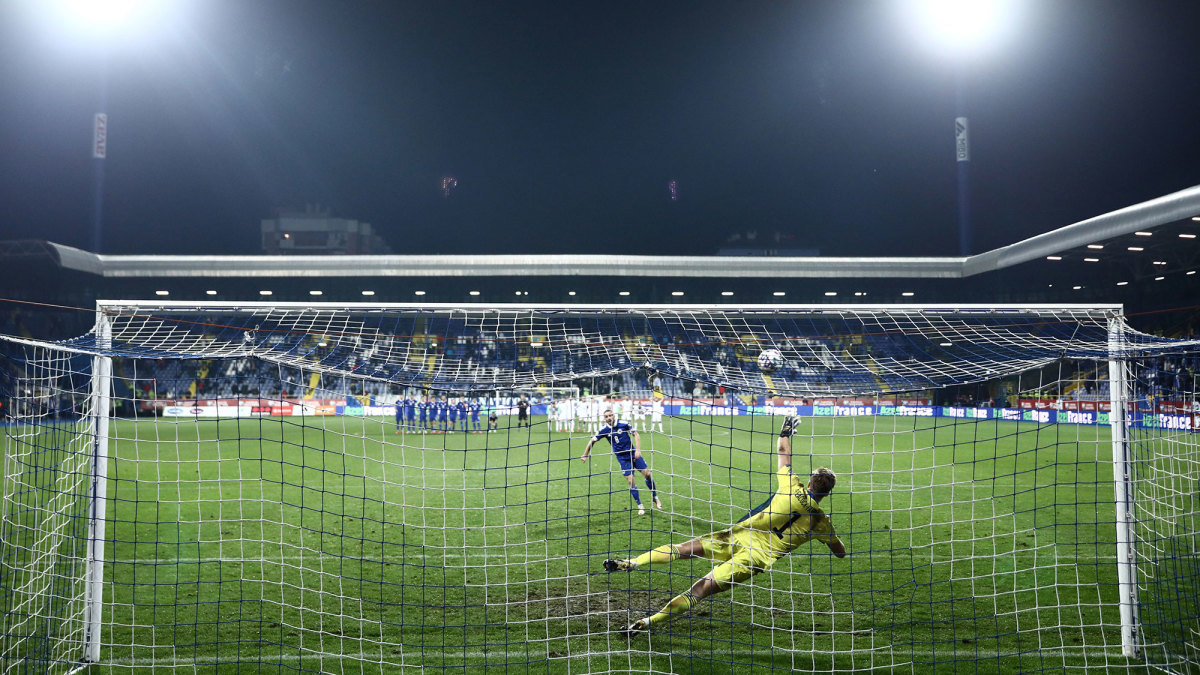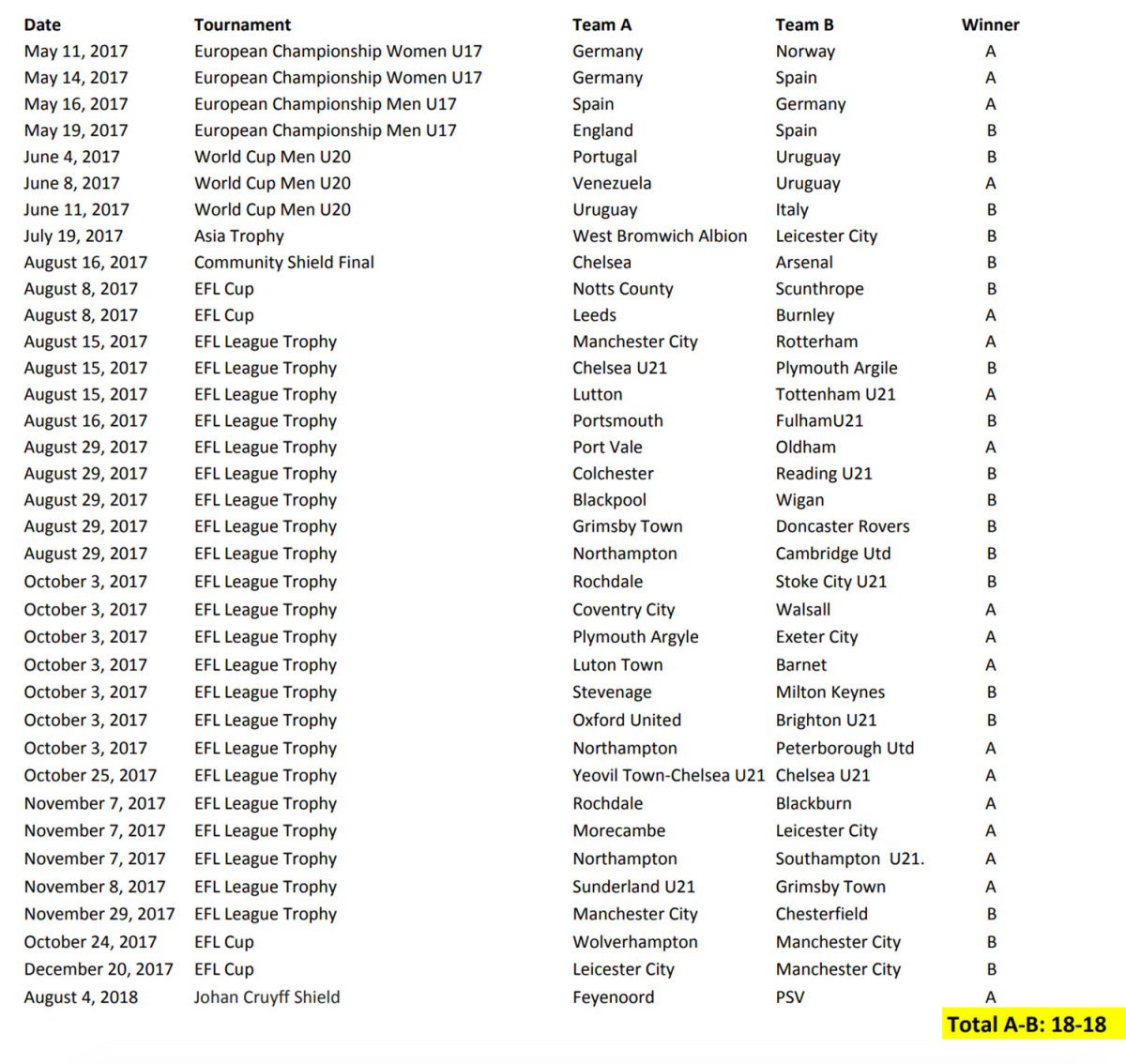Data Revealed: ABBA Penalty Kick Shootout Trials Yield a More Balanced Outcome
The three penalty shootouts in the 2020 MLS playoffs thus far have been full of controversy, drama and excitement. First, Orlando City goalkeeper Pedro Gallese was sent off in the middle of the club's eventual shootout win over New York City, with Orlando City defender Rodrigo Schlegel forced to step in and saving a penalty to become the unlikely hero. Then, the San Jose Earthquakes, back from the dead with a last-gasp Chris Wondolowski equalizer, had all three of their spot kicks against Sporting Kansas City saved by Tim Melia. Finally, FC Dallas edged out the Portland Timbers after an epic 8-7 shootout, with 15 consecutive conversions until Jorge Villafaña's eighth-round shot was saved. Dramatic? Certainly. But fair? Not entirely.
Each of the shootouts followed the standard ABAB order. That means Team A took one kick and then Team B took the next, and so on. This ordering, statistically speaking, is unfair. It gives an advantage to the teams that kick first. In just the small sample of the MLS playoffs, the team kicking first won two out of three. A league as innovative as MLS should try to improve every aspect of the game–and that includes giving teams the same chance to win a shootout.
Let's explain further. In 2010 I published an article in the American Economic Review titled, “Psychological pressure in competitive environments: Evidence from a randomized natural experiment.” In a sample of over 100 penalty shootouts, it was found that the team that kicks first is more likely to win it (the advantage is about 60%-40%). The psychological mechanism that generates this advantage comes from the fact that kicking first, and in all the odd rounds of the shootout, gives a team a greater likelihood to be leading in the score, while kicking second, and in all the even rounds, gives a team a greater chance to be lagging.
Think about it: in each pair of penalty kicks in the sequence, the same team always kicks first. This leading/lagging asymmetry has an impact on performance during the shootout. In the decisive kicks, for example, it is easier to score the penalty to win a shootout (a 92% conversion rate), than it is to score the penalty to avoid defeat in a shootout (a conversion rate around 62%).
In 2012, in an article in Economic Inquiry titled, “Tournaments, Fairness and the Prouhet‐Thue‐Morse sequence,” and in my 2014 book Beautiful Game Theory, I examined over 1,000 shootouts, which confirmed this finding and gave way to a simple design suggestion to minimize any advantage associated with the kicking order.

Take two teams, A and B. Say that a coin selects A to kick first and B second in the first two rounds. What should the order in the next two rounds be? Well, if the order A, B offers any kind of advantage to either team, then by reversing the order in the next two rounds we would tend to compensate for that advantage. Doing so means that the resulting sequence in the first four rounds should be A,B - B,A, instead of the usual alternating order, A,B - A,B. And, of course, this reversing is innocuous if no advantage existed in the first place. There is no downside to reversing the order in the second pair of kicks, only upside.
What next? Ideally, in the next four penalties we would reverse the order of the first four again in case an advantage for either team remains. Unfortunately, reversing the order in the first two, and then in the next four, and then next eight, and so on, would result in a complicated sequence known as the Prouhet-Thue-Morse sequence. Alternatively, we could simply repeat A,B,B,A for the subsequent rounds and keep repeating A,B,B,A every four kicks, until a team wins (however winning is determined). This would result in the much simpler sequence: A,B,B,A–A,B,B,A–A,B,B,A–A,B,B,A …
This is exactly the serving order followed in tie-breaks in tennis.
I contacted members of the International Football Association Board (IFAB), which sets the universal Laws of the Game, soon after these pieces of research were published. Influenced by these findings and ideas, FIFA decided to start implementing ABBA shootouts in various youth European and world championships in 2017. The English FA followed suit in the Community Shield in 2017 and English Football League Cup and EFL Trophy competitions in the 2017-18 season. The Dutch FA followed in the 2018-19 season.
So, how has ABBA worked in these trials? For the first time, the complete dataset of the games that have used the ABBA sequence in FIFA tournaments and in England can now be revealed. (Evidence from the Netherlands outside of the Feyenoord-PSV Johan Cruyff Shield match in 2018 has not yet been obtained):

The sample indicates that ABBA works in creating a more fair and balanced outcome, bringing the frequencies with which the A and B teams win closer to 50-50 than to 60-40. In fact, in this sample they are exactly 50-50. ABBA is both theoretically and empirically fairer than ABAB, and perhaps it's just a matter of time before a league, MLS or elsewhere, has the leeway and will take a chance on implementing the progressive shootout method.
Ignacio Palacios-Huerta is a professor of managerial economics and strategy at the London School of Economics, a former head of talent ID and member of the board of directors at Athletic Bilbao and a founding partner of ASK+.
